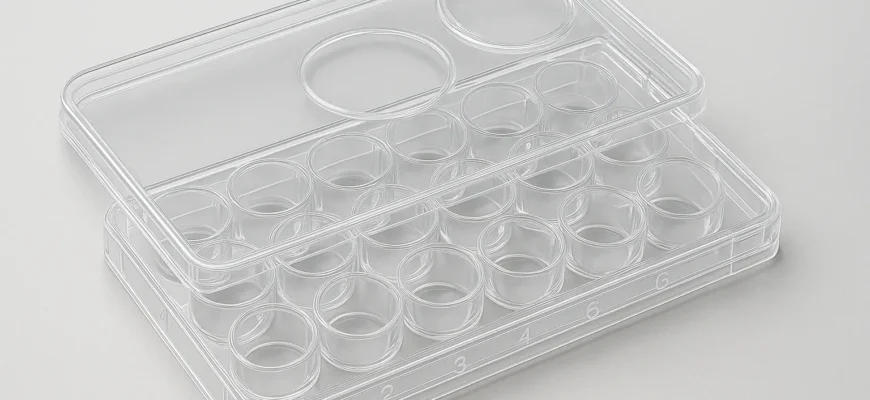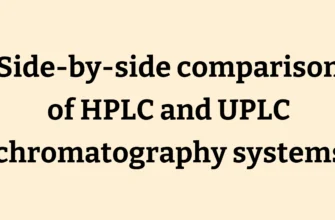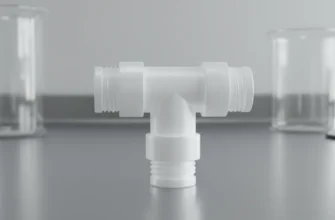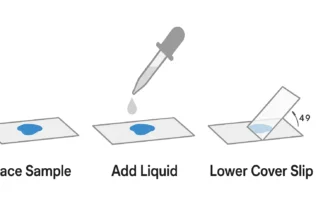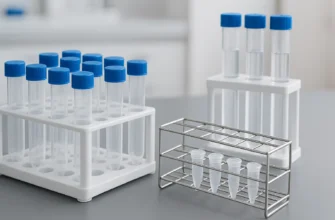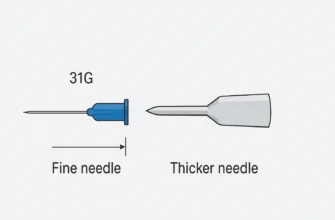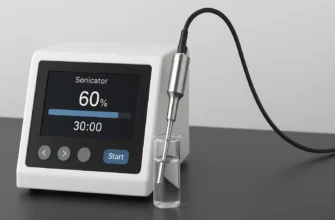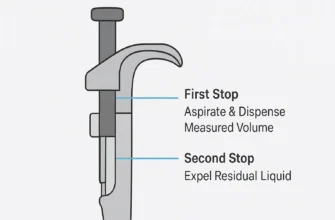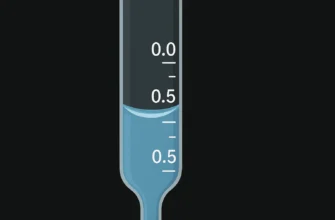24‑Well Plates in Cell and Tissue Culture: A Complete, Updated Guide
A standard 24‑well cell culture plate offers an optimal balance of per‑well area and working volume for routine assays, method development, and low‑to‑medium throughput work. Typical specifications include approximately 1.9 cm² growth area and 0.38–0.57 mL recommended working volume per well for TC‑treated polystyrene formats, with gamma‑sterile, nonpyrogenic products and nonreversible lids standard from major manufacturers such as Corning, Falcon, Thermo Scientific Nunc, Greiner Bio‑One, and TPP.
Key highlights
-
A 24‑well plate commonly provides ~1.9 cm² growth area and ~0.38–0.57 mL recommended working volume per well for TC‑treated formats; total geometric volume is ~3.3–3.4 mL per well depending on the brand.
-
Leading brands and product lines with robust QC and certificates include Corning Costar and Falcon 24‑well TC‑treated plates, Thermo Scientific Nunc Nunclon Delta plates, Greiner CELLSTAR, and TPP 24‑well TC‑treated plates.
-
TC‑treated surfaces are made more hydrophilic to enhance adhesion of anchorage‑dependent cells (e.g., Nunclon Delta). Non‑treated plates retain hydrophobic polystyrene, suitable for suspension cells and attachment‑averse assays.
-
Standard design features include nonreversible lids with condensation rings, alphanumeric well coding, raised well rims (chimney wells) to minimize cross‑well contamination, and a uniform SBS/ANSI footprint for stacking and automation.
-
Sterility and certifications: Most reputable plates are gamma‑irradiated, sterile, and certified nonpyrogenic; many are also DNase/RNase‑free and human DNA‑free. Lot‑specific certificates are typically available.
-
Compared with 96‑well plates, 24‑well plates trade throughput for larger surface area and working volume per well, making them preferable for adherent cultures requiring more medium, longer incubations, or frequent microscopy.
Introduction
In cell and tissue culture workflows, 24‑well microplates provide an excellent midpoint between volume per condition and plate‑level throughput. The format simplifies seeding, feeding, imaging, and intervention steps while preserving statistical power across replicates. Choosing the right surface treatment, plastic, and lid design—and working within validated fill volumes—directly affects cell viability, assay sensitivity, and reproducibility.
Materials and optical properties
Polystyrene is the near‑universal substrate for cell culture plates because it is optically clear for transmitted‑light microscopy and can be reliably surface‑modified for cell attachment. For 24‑well plates, polystyrene is standard across major brands (Corning/Falcon, Thermo Nunc, Greiner, TPP), with high clarity and low autofluorescence variants available from select vendors.
Polycarbonate is used widely for inserts and specialty components (e.g., membranes), and in other vessel types, but is less common as the primary well plate body for standard 24‑well formats. For routine 2D culture in 24‑well plates, optically clear, TC‑grade polystyrene remains the best‑supported, validated choice.
Surface treatments: TC‑treated vs. non‑treated (and coatings)
-
TC‑treated polystyrene: Plasma/chemical modification increases hydrophilicity and introduces charged/oxygenated groups that promote adhesion and spreading of a broad range of adherent cell types. Examples include Thermo Scientific Nunc Nunclon Delta, validated for robust monolayer formation across cell lines.
-
Non‑treated polystyrene: Hydrophobic surface discourages attachment, supporting suspension cells or preventing adherence in attachment‑averse assays.
In addition to generic TC treatment, many manufacturers offer pre‑coated 24‑well plates (collagen I, poly‑D‑lysine, poly‑L‑lysine) to support difficult‑to‑adhere or primary cells and neuronal cultures. Example SKUs specify coatings and keep the standard 1.9 cm² growth area and ~0.5–1.0 mL working volume guidance.
Dimensions, growth area, and volumes (reference values)
-
Approximate growth area per well: 1.9 cm².
-
Total volume per well: ~3.3–3.4 mL (geometric).
-
Recommended working volume: ~0.38–0.57 mL per well for TC‑treated Corning Costar 24‑well plates; many labs operate comfortably within 0.5–1.0 mL depending on gas exchange, evaporation control, and assay requirements.
-
Typical well diameter (flat bottom): ~15.6 mm.
Thermo Fisher publishes practical seeding/handling guidance that converges on 0.5–1.0 mL medium per well and 0.05×10^6 cells per well initial seeding for common adherent workflows, with ~0.24×10^6 cells at confluency in 24‑well plates.
Lids, rims, coding, and stacking
Quality 24‑well plates include nonreversible lids with condensation rings to lower evaporation and contamination risk, raised rims (“chimney wells”) for reduced cross‑well wicking, alphanumeric well coding, and an SBS‑compatible footprint for stacking and automation. Some vendors emphasize “single‑position” lids to maintain orientation and prevent cross‑contamination during handling.
Sterility, QC, and certifications
Reputable products are supplied sterile, commonly gamma‑irradiated, and certified nonpyrogenic. Many also carry DNase/RNase‑free and human DNA–free claims. Manufacturers provide lot‑specific Certificates of Quality/Analysis for traceability and compliance, accessible directly from product pages (e.g., Falcon 353047).
Note: Some specialized, pre‑coated plates may be supplied non‑sterile (e.g., certain data sheets), so always check the SKU‑specific datasheet for sterilization status before use.
Advantages in adherent and suspension culture
-
Adherent cells: TC‑treated plates facilitate robust attachment and spreading, with sufficient area and medium volume to support longer incubations, interventions, and imaging. Pre‑coated options extend compatibility to demanding cell types.
-
Suspension cells: Non‑treated plates reduce unwanted adherence and are suitable for hematopoietic and other suspension cell lines. The larger per‑well volume versus 96‑well improves handling for media changes and sampling without losing cells to adhesion.
Vented lids and validated working volumes support adequate gas exchange for both adherent and suspension cultures when incubated under standard conditions.
24‑well vs. 96‑well: when to choose which
-
24‑well plates: ~1.9 cm² area, ~0.38–0.57 mL recommended working volume per well (often 0.5–1.0 mL in practice), better for method development, microscopy, transfection optimization, and assays requiring more medium or cells per condition.
-
96‑well plates: ~0.32 cm² area, ~100–200 µL recommended working volume per well, ideal for high‑throughput screening, ELISAs, and dose‑response miniaturization.
Select the format by balancing throughput against per‑well medium volume, imaging needs, and cell numbers required to achieve signal‑to‑noise in the assay window.
What to look for when buying high‑quality 24‑well plates
-
Verified dimensions and capacities: ~1.9 cm² growth area; ~3.3–3.4 mL total volume; validated working volumes per manufacturer guidance.
-
Surface fit: TC‑treated for adherent cells; non‑treated for suspension; consider pre‑coated (collagen I, PDL/PLL) for sensitive or specialized cell types.
-
Sterility and certifications: Gamma‑sterile, nonpyrogenic; check DNase/RNase/hDNA‑free claims and access to lot‑level certificates.
-
Lid and rim design: Nonreversible lids with condensation rings, raised well rims, clear alphanumeric coding, stable stacking, and SBS footprint for automation.
-
Optical performance: Clear, low‑autofluorescence polystyrene if imaging and fluorescence readouts are critical.
Brand examples and typical specs (illustrative, not exhaustive)
-
Corning Costar 3524/3527: 24‑well, TC‑treated, 1.9 cm² per well, total 3.4 mL, recommended 0.38–0.57 mL working volume; gamma‑sterile, nonpyrogenic; nonreversible lids with condensation rings.
-
Falcon 353047: 24‑well TC‑treated, 1.9 cm² per well; sterile; certificates downloadable by lot.
-
Thermo Scientific Nunc Nunclon Delta: TC‑treated surface promoting broad adhesion; Thermo provides seeding/volume guidelines including 0.5–1.0 mL medium per well in 24‑well plates.
-
Greiner Bio‑One CELLSTAR 24‑well: 1.9 cm² per well, 0.5–1.5 mL working volume, TC surface; nonpyrogenic, DNase/RNase/hDNA‑free claims; single‑position lid and automation‑friendly footprint.
-
TPP 92024: 24‑well TC‑treated, surface area ~1.86 cm²; dimensions 128×85×22 mm; sterile; supplied individually wrapped.
Practical tips and common pitfalls
-
Stay within the recommended working volume range to balance gas exchange, nutrient availability, and evaporation control. For many adherent workflows, 0.5–1.0 mL per well is appropriate in 24‑well plates.
-
Use nonreversible lids with condensation rings and chimney‑well rims to reduce edge effects and cross‑contamination; avoid stacking too tightly to maintain airflow in humidified incubators.
-
Match surface treatment to cell biology. If adhesion is poor on standard TC‑treated plates, consider validated coated plates (e.g., collagen I, PDL).
-
Always verify sterilization method and QC claims on the exact SKU being purchased; download lot certificates when required for compliance or documentation.
FAQs (revised and verified)
Are there clear and TC‑treated options for 24‑well plates?
Yes. Clear, TC‑treated polystyrene 24‑well plates are standard across major vendors, typically with ~1.9 cm² per well and validated working volumes. Non‑treated and pre‑coated variants are widely available for specific use cases.
Can a 24‑well plate be used in both research and industrial settings?
Yes. 24‑well plates are used across academia, biotech, and pharma for routine culture, imaging, transfection optimization, compound screening pilots, and preparative steps before miniaturization to 96‑/384‑well formats.
Where can high‑quality 24‑well plates be purchased in the United States?
Directly from manufacturers (Corning, Falcon, Thermo Fisher Scientific Nunc, Greiner Bio‑One, TPP via distributors) and authorized lab suppliers. Look for TC‑treated plates with published specifications (area, volumes), gamma‑sterile/nonpyrogenic certification, and accessible lot certificates.
Citations for critical specifications and claims
-
Corning surface area/volume guide including 24‑well: 1.9 cm² per well; total ~3.4 mL; recommended 0.38–0.57 mL working volume.
-
Costar 24‑well product page confirming 1.9 cm², 3.4 mL total, gamma‑sterile, nonpyrogenic, nonreversible lids with condensation rings.
-
Falcon 353047 24‑well TC‑treated with downloadable lot certificates.
-
Thermo Fisher guidance table for 24‑well seeding and medium volumes (0.5–1.0 mL).
-
Greiner Bio‑One 24‑well specs: 1.9 cm² area, 0.5–1.5 mL working volume, TC surface, nonpyrogenic, DNase/RNase/hDNA‑free; single‑position lid.
-
Corning Costar 3527 tech specs (well diameter 15.6 mm; 3.4 mL well volume; 0.38–0.57 mL working).
-
Example coated 24‑well data sheet (PLL/PDL/Collagen I) with 1.9 cm² and 0.5–1.0 mL working volume.
-
Broader Nunclon Delta surface documentation indicating enhanced adhesion across cell types.

